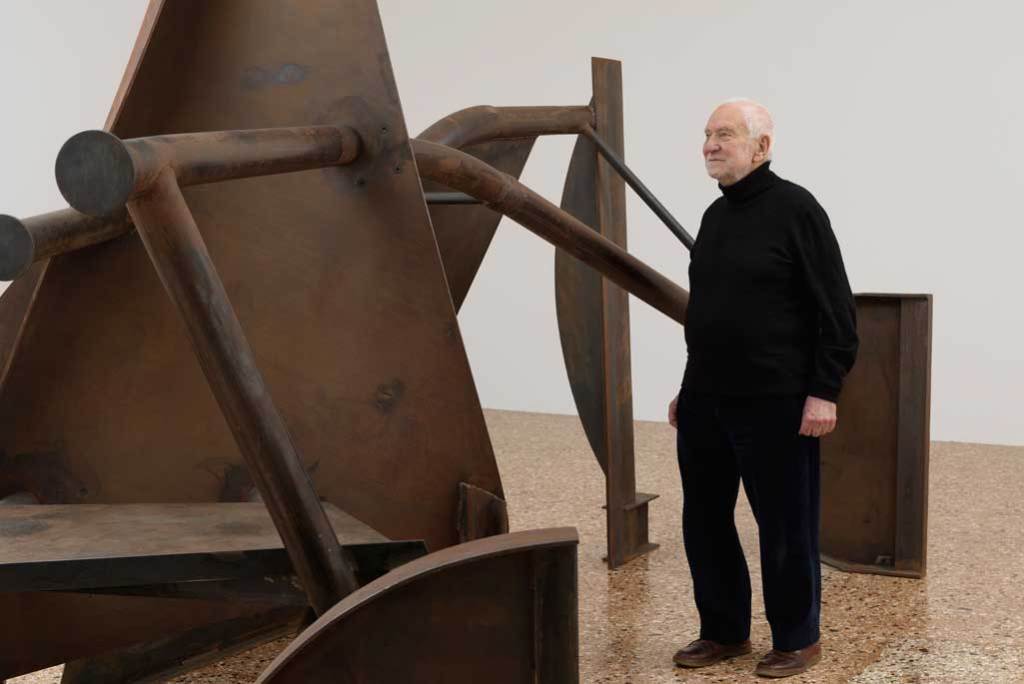Sir Anthony Caro was among the giants of modernism and a man whose influence upon the practice of sculpture has not, even at the end of a career spanning 60 years, been fully fathomed. As a sculptor his reputation bears comparison with the greatest figures of the post-war period, and as a teacher he was an inspiration to a generation of British artists who redefined the very notion of sculpture. Those of us who did not know him personally can console ourselves against the sadness of his death with the certainty that his influence will be felt for decades to come.
Caro’s greatest contribution to his medium was to see to their logical conclusion the revolutionary advances made by his modernist forebears. Not the least among that lineage was the man for whom Caro worked as an assistant in the 1950s, Henry Moore, under whose tutelage he was first exposed to artists including Picasso and Francis Bacon. Their influence is apparent in the early, figurative works so energetically championed by the influential British critic David Sylvester. Yet it was an encounter with another critic, the arch-modernist Clement Greenberg, that would usher Caro onto the path to international fame.
Greenberg saw in Caro’s work a three-dimensional equivalent to the absolute abstractions of the great post-war American painters, an artist who treated sculpture as a combination of materials rather than as a means of representing, however obliquely, an object or figure. It was also through Greenberg that Caro was introduced to David Smith, already working in steel, who would become a great friend and rival to the younger man. Caro recognised that Smith was already working the reforms of cubism into sculpture, which spurred him to further expand the possibilities of the form.
His breakthrough came with an exhibition at the Whitechapel Gallery in 1963, at which he exhibited a series of brilliantly coloured steel sculptures that refuted the notion that three-dimensional work should be organised around a single point or centre of gravity. These were elegantly exploded sculptures, their radicalism exaggerated by their placement directly onto the floor (a much copied innovation). Among these works was the magnificent Early One Morning (1962), of which Caro once said, ‘I wanted it to be like a dance’. In this work’s transformation of unwieldy steel girders into elegant, supple pirouettes we can see the genius that would endure throughout Caro’s long working life.
For all his formal radicalism, Caro adhered throughout his career to the increasingly unfashionable notion that art is a practice that might elevate the human above the mundane. When asked by the journalist Alastair Sooke what his sculpture ‘is for’, he replied, ‘To please the eye and feed the soul.’ This absolute faith in the capacity of art to express the inward significance of things, in an age when obsession with the exterior has become consensus, will be deeply missed.
It is strange to say of an artist so advanced in years, but nonetheless true, that we should mourn the loss of not only the man but of those works he was yet to create. He continued to work tirelessly, contributing new pieces to retrospectives at many of the world’s greatest institutions (a major exhibition of his work at the Museo Correr, Venice, closed only yesterday). The fact that he leaves us with an extraordinary, profoundly influential body of work that nonetheless feels incomplete is testament to the creativity that accompanied him to the very end of his life, and to the vast possibilities he opened up for sculpture.



